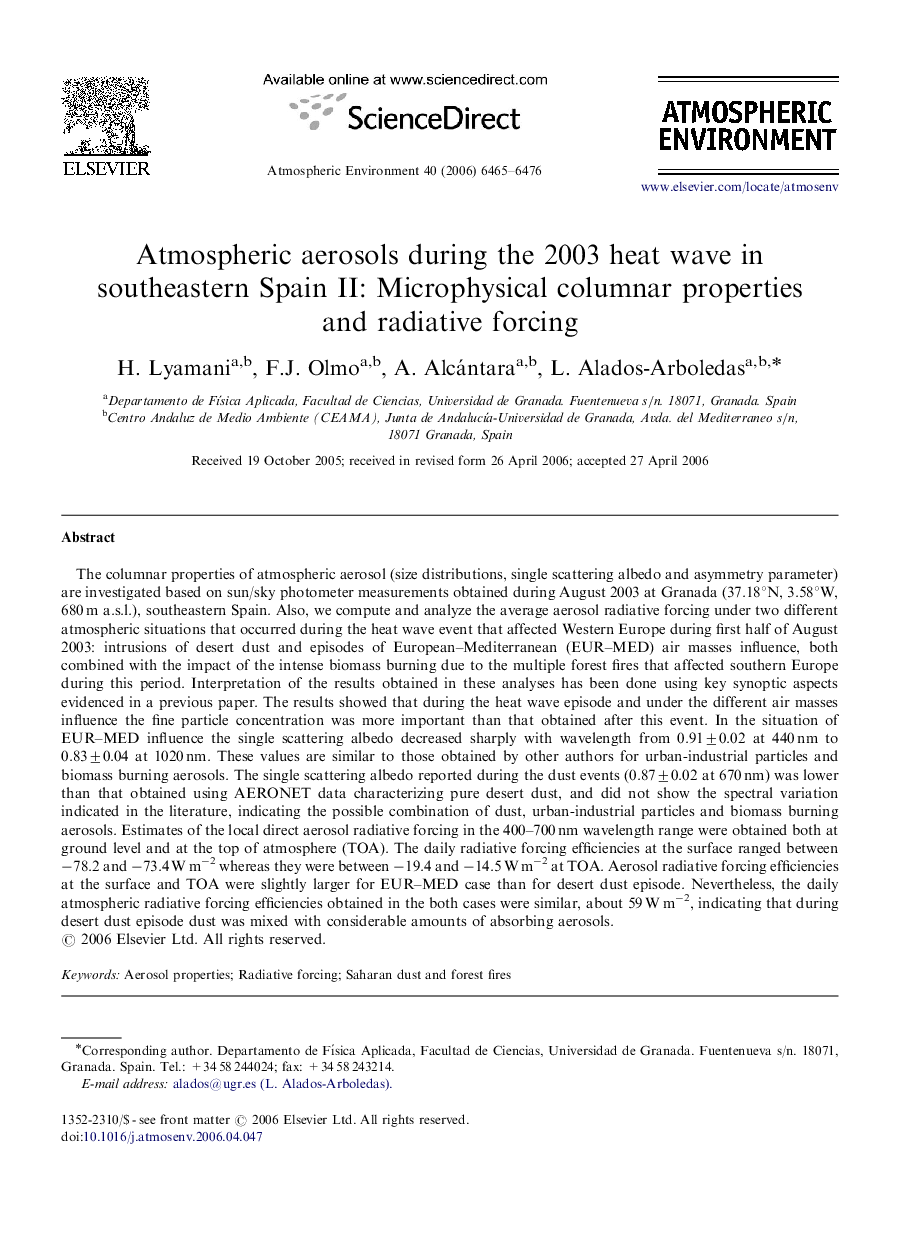| کد مقاله | کد نشریه | سال انتشار | مقاله انگلیسی | نسخه تمام متن |
|---|---|---|---|---|
| 4443836 | 1311211 | 2006 | 12 صفحه PDF | دانلود رایگان |

The columnar properties of atmospheric aerosol (size distributions, single scattering albedo and asymmetry parameter) are investigated based on sun/sky photometer measurements obtained during August 2003 at Granada (37.18°N, 3.58°W, 680 m a.s.l.), southeastern Spain. Also, we compute and analyze the average aerosol radiative forcing under two different atmospheric situations that occurred during the heat wave event that affected Western Europe during first half of August 2003: intrusions of desert dust and episodes of European–Mediterranean (EUR–MED) air masses influence, both combined with the impact of the intense biomass burning due to the multiple forest fires that affected southern Europe during this period. Interpretation of the results obtained in these analyses has been done using key synoptic aspects evidenced in a previous paper. The results showed that during the heat wave episode and under the different air masses influence the fine particle concentration was more important than that obtained after this event. In the situation of EUR–MED influence the single scattering albedo decreased sharply with wavelength from 0.91±0.02 at 440 nm to 0.83±0.04 at 1020 nm. These values are similar to those obtained by other authors for urban-industrial particles and biomass burning aerosols. The single scattering albedo reported during the dust events (0.87±0.02 at 670 nm) was lower than that obtained using AERONET data characterizing pure desert dust, and did not show the spectral variation indicated in the literature, indicating the possible combination of dust, urban-industrial particles and biomass burning aerosols. Estimates of the local direct aerosol radiative forcing in the 400–700 nm wavelength range were obtained both at ground level and at the top of atmosphere (TOA). The daily radiative forcing efficiencies at the surface ranged between −78.2 and −73.4 W m−2 whereas they were between −19.4 and −14.5 W m−2 at TOA. Aerosol radiative forcing efficiencies at the surface and TOA were slightly larger for EUR–MED case than for desert dust episode. Nevertheless, the daily atmospheric radiative forcing efficiencies obtained in the both cases were similar, about 59 W m−2, indicating that during desert dust episode dust was mixed with considerable amounts of absorbing aerosols.
Journal: Atmospheric Environment - Volume 40, Issue 33, October 2006, Pages 6465–6476